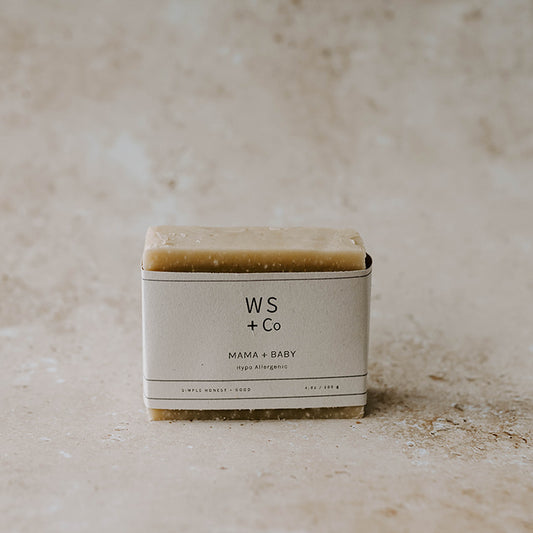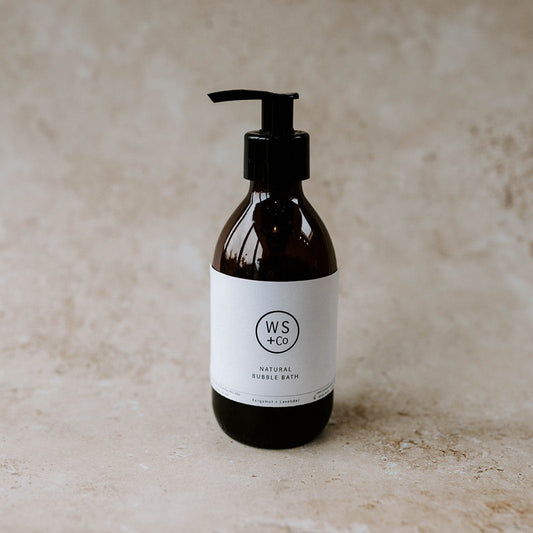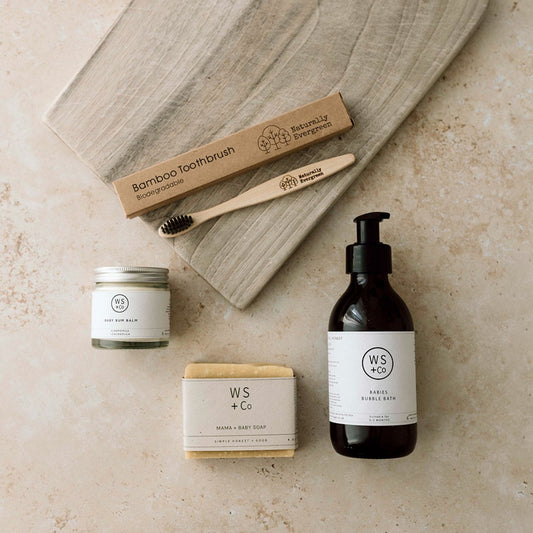The Wonders of Sage
Share

What to do when Sage grows strong in your Garden
Sage is a gorgeous perennial herb, easy to grow and slow to perish, it is the perfect starter for your herb garden. And if your sage bushes are anything like ours, then during the summer months you probably have more sage than you know what to do with.
But what is sage, and why should you take the time to harvest, preserve + store it?
*
Common Sage, or Salvia Officinalis, has long been heralded as a miracle herb. The name Salvia, coming from the Latin ‘Salvus’, means saved, or healthy.
Throughout the centuries, Sage was used as a medicinal herb to cure all sorts of ailments, from palsy to snake bites. Known by the Romans as the ‘Holy Herb’, its beneficial properties were thought to be almost limitless
These days however, Sage is more commonly found in the kitchen, used to add flavour to a wide array of culinary dishes. But as we’ll see, the properties of sage make it useful for so much more
THE BENEFITS OF SAGE
Sage Contains Vitamins A + K, potassium, magnesium + beta carotine. And so this vitamin, mineral + anti-oxidant rich herb has been shown to have a number of health benefits.
Reduces inflammation
Reduces levels of Cholesterol + Regulates Blood Sugar
Treats digestive problem
Improves mental function
Treats painful menstrual cramps and regulates hot flashes during menopause
Asthma treatment
It is even applied topically on the mouth to treat soreness or swelling

Preserving
+
Storing Sage
The best time to harvest your sage is during spring, summer or autumn months, when the plant is at its strongest. Using secaturs, cut at the base of its stem, where it the leaf diverges from the rest of the plant, and add it to your pile. Younger leaves will have a stronger flavour, so its a good idea to know what use you will put your sage to before you start clipping.
When you have taken as much as you need, remembering not to take all the leaves, as you want your plant to keep growing, it is time to get them inside.

TO DRY OR NOT TO DRY
If your using your sage in the kitchen, you don’t necessarily need to dry your herbs out. Simply take the fresh leaves and add them to your dish.
If however, you are planning to use them for another purpose, or to preserve them for later use, you’ll need to dry them out to prevent them from going bad. There are a number of ways you can do this
Drying them out on the line
Using a dehydrator
In the Microwave
In the Oven
While all of these ways work, we always prefer to dry ours out on the line. It takes a little while longer, but it’s the most natural way to do it and least likely to spoil the leaves.
Hanging them inside also has the added benefit of keeping them safe from the elements, and I always think they look beautiful hanging in the kitchen
Once your sage is nice and dry, (this should take a couple of days depending on the humidity levels) you can continue to store it as it is, hanging on the line, or pop it in a kilner jar.

Smudge Sticks or Sage Burning?
The burning of sage or ‘smudging’ has become more and more popular recently, with many sites that sell white sage touting the benefits of sage burning, from ousting bad spirits to the cleansing of the mind.
But the practice of smudging is an old, spiritual tradition practiced by the indigenous tribes of North America, with white sage quickly becoming an endangered plant.
So it is important when burning sage in the home to be mindful of the origin of ‘smudging’ and to educate ourselves on its original purpose. You can take a more in depth look here
As the article suggests, a more appropriate way to burn sage would be to ‘smoke cleanse’, using the sage that grows in your garden.
Gather together your dried leaves, even add some sprigs of lavender or rosemary, and burn the ends as you walk around the house. Be careful not to let any embers drop on the carpet, or use a fire safe bowl to let the herbs slowly burn away.
Sit back, and enjoy the calming therapy of sage smoke.

Cleansers + Room Spritz
Air Cleansers, or Spritz’ are a great way to freshen up a space and to combat lingering odors. You can spray them onto linens to create a relaxing, cozy environment, or simple spray them into the air after you leave a room.
The recipe is simple, and pretty versatile. Were using sage for this recipe of course, but you can pick any combination of essential oils + herbs that you want
A quick note on the blend - As you may know, water + oils don’t just mix on their own, but need an emulsifier to help them combine. In this recipe, we are going to keep it simple, so you can use witch hazel or alcohol to help this process along. Just remember to shake it well each time before using!
WHAT YOU WILL NEED
A spray bottle
Witch Hazel or Alcohol
Essential Oils
-
Fresh Sage leaves
TIME TO MIX
Add
1 part Alcohol to 2 parts Distilled water
4-5 Drops of Sage Essential oil
A few whole sage leafs
Shake it all together, spray around the room, onto linens, and anywhere that you want to enjoy the smell of sage!

Make Your Own Bath Salts
For this recipe it is better to use dried out sage, as your bath salts will preserve a bit better. However if you’re planning to use it right away it shouldn’t matter too much
You can check out our recipe here - and just substitute your Sage for the Rosemary + Lavender, or even use all three!

Brew a Cup of Sage Tea
As we’ve seen, Sage has a number of health benefits when ingested. So brewing it in Tea is an easy way to get it into your diet. It’s anti-inflammatory and anti-bacterial properties make it the perfect addition to your dental care routine (it’s even said to help combat bad breath!)
So boil the kettle, fill up a pot with fresh or dry sage, and brew yourself up a Sagey cup! Trust us, you wont regret it!
Have we left anything out? Let us know in the comments!
*


